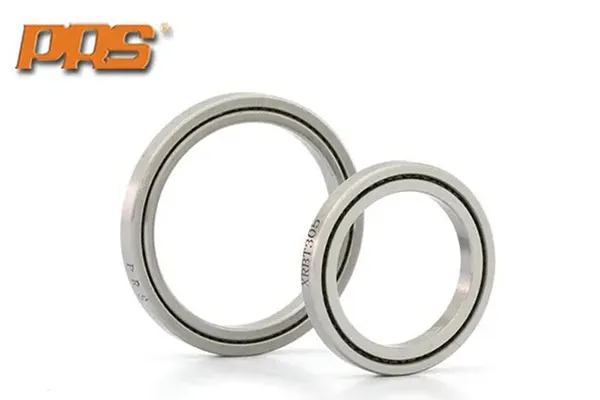Crossed Roller Bearings: Operation Modes and Inspection Methods for Ensuring Optimal Performance
Crossed roller bearings, a type of rolling bearing commonly used in high-load and high-speed applications, play a crucial role in maintaining the smooth operation of various equipment. Understanding their operation modes and inspection methods is essential for ensuring optimal performance and longevity. In this article, we delve into the intricacies of crossed roller bearings to gain a better understanding of these vital mechanical components.
I. Operation Modes of Crossed Roller Bearings
Unidirectional and Bidirectional Operation:
- Unidirectional: Bearings designed to withstand loads from one direction, often found in applications such as industrial robotic arms where the primary load is in a single direction.
- Bidirectional: These bearings can withstand loads from two directions simultaneously, making them suitable for applications like rotating tables in machine tools where both horizontal and vertical loads are present.
Rolling and Rotational Movement:
- The crossed arrangement of rollers allows for both rolling and rotational movement, reducing friction between the bearing and the shaft and enhancing efficiency. This design enables the bearing to adapt to complex operational scenarios, such as multi-axis movements in robotic joints.
Preloading Design:
- Some crossed roller bearings feature a preloading design that applies a predetermined force to increase the bearing's rigidity and accuracy. Preloading reduces internal clearance, improving the bearing's response time to loads, particularly beneficial in high-precision applications like CNC machines.
High Rigidity and Precision:
- The crossed arrangement of rollers endows the bearing with high rigidity, resisting deformation under external loads. This design also contributes to improved accuracy, making it ideal for applications requiring precise positioning and control, such as semiconductor manufacturing equipment.
Application Flexibility:
- The versatile operation modes of crossed roller bearings allow for flexibility in different applications. Their suitability for rotational, oscillatory, and complex multi-axis movements makes them an ideal choice for fields like robotics, solar tracking systems, and medical diagnostic equipment.
High-Speed Capability:
- The design of the rollers minimizes rolling friction, reducing heat generation and wear in the bearing. This allows for high-speed operation, meeting the demands of industrial applications requiring high rotational speeds, such as high-speed machine tools and wind turbines.
Axial and Radial Load Capacity:

II. Inspection Methods for Crossed Roller Bearings
Visual Inspection:
- The initial step in bearing inspection involves a visual examination to identify any visible damage, deformation, or corrosion. The bearing surface should be smooth, free of cracks, and retain its metallic luster. Any abnormalities may necessitate further inspection or bearing replacement.
Clearance Measurement:
- Using appropriate tools, measure the clearance within the bearing after installation. Excessive clearance can lead to unstable vibrations during operation, while insufficient clearance can increase friction and reduce bearing life. Ensuring proper clearance is crucial for optimal bearing performance.
Rotational Flexibility Check:
- Manually rotate the bearing to assess its rotational flexibility and smoothness. Any noticeable stiffness or unusual resistance may indicate a problem with the bearing, requiring further investigation. Additionally, listen for any abnormal noises during rotation, as these can be signs of damage or wear.
Bearing Play Measurement:
- Accurately measure the play between the inner and outer rings of the bearing using suitable measuring tools. The amount of play should fall within the specified range for the bearing type and size. Excessive or insufficient play can affect the bearing's performance and may require adjustment or replacement.
Lubrication Condition Assessment:
- Inspect the lubrication condition of the bearing, ensuring adequate levels of lubricating oil or grease. Both excess and insufficient lubrication can lead to bearing failure. Additionally, check for contamination in the lubricant and replace it if necessary, cleaning the lubrication channels as well.
In conclusion, crossed roller bearings are critical components in various industrial applications, and understanding their operation modes and inspection methods is essential for ensuring reliable and efficient equipment performance. Regular maintenance and inspection of these bearings can significantly extend their service life, reduce the risk of failures, and enhance the overall productivity and safety of the equipment.

 Hot News
Hot News